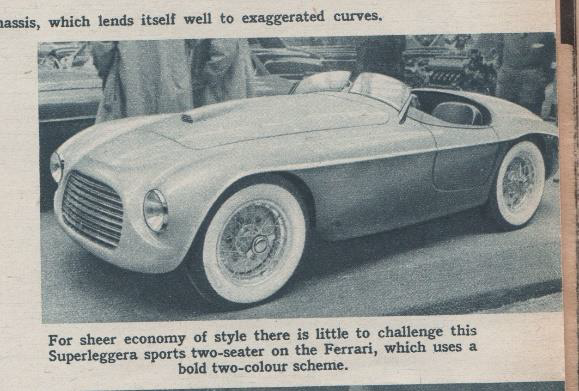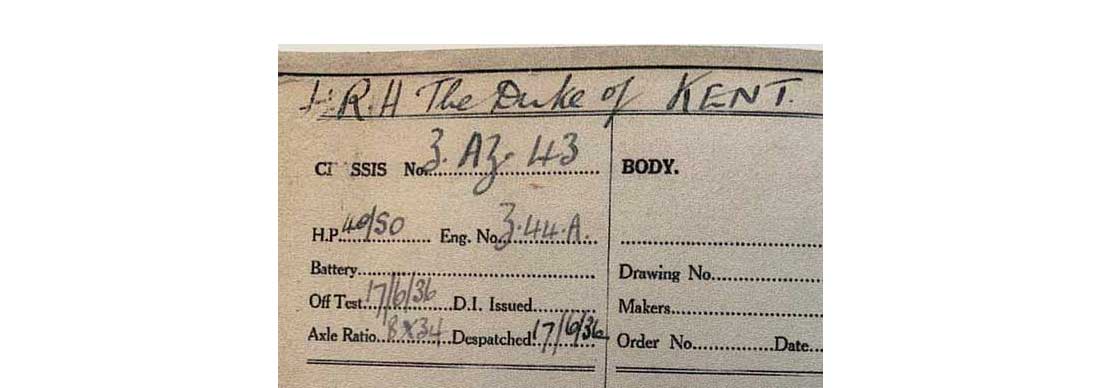JLR v. Enthusiasts
STOP PRESS (23/03/23): We are exceptionally pleased to say that the Magnussons have won their appeal against the lower Swedish court's decision in favour of JLR with regard to their C-type replica which JLR were insisting they must destroy. Not only have the Magnussons won the case but they have been awarded considerable costs. It is, though, not all good news. It seems that this court accepts JLR have copyright in the C-type design (which they incorrectly credited in its entirety to Malcolm Sayer) and so in theory no-one can now build C-type replicas commercially. The Magnussons won because private use of a copyrighted item is permitted. It seems that the Magnussons have bravely won their battle but the larger community may have lost the war.
Following our various articles and comments on the situation regarding JLR and C-type replicas and the company’s successful court case in Sweden, we have had a number of interesting emails from a gentleman called Neil Murray, which, with his permission, we have strung together.
Before we commence, I can tell you that the JLR legal team, after three-and-a-half weeks, finally replied to my question as to whether JLR would object to me selling prints of my E-type. They tell me I cannot. I cannot without being granted a licence and paying a royalty. They also require to know how many I would sell, at what price, at what size and how they would be marketed. So readers, be warned, you cannot sell photographs of your own Jaguar or Land-Rover. To me, and many others, it is beyond parody. We cannot understand why they are behaving like this. Do they want to ruin their reputation?
Mr Murray writes:
Thank you for yet another interesting e-mail. Of particular interest to me was the piece about the litigation re. the status of the XK 120C and the suggestion that the body shape was a ‘work of art’ rather than an artistic work. My understanding of a ‘work of art’ is that it should display a preponderance of original thinking. It should display the manifestation of a creative mind. While on the other hand, an artistic work shows the aesthetic nature of the designer. Many designs fulfil a technical specification, but these are not ‘easy on the eye’!
You will also know that I was an enthusiastic purchaser of the Porter Press book on the XK 120C and that you featured an image of my models of this car, made when a teenage youth.
[I was advised this week by a lawyer familiar with the JLR situation that the legal definition of a ‘work of art’ is that it has ‘no practical use’. PP]
“The C-type had none of the features of the older, traditional Le Mans-type sports-racing cars. Its voluptuous all-enveloping body, with smooth sides and faired in headlamps, departed radically from that format and set a new direction for the design of open sports-racing cars.” [Quote taken from JLR’s expert witness statement to the court]
I venture to suggest that this statement is a load of poppycock!
The following images have all been culled from the pages of The Autocar for 1949. The first is of the 1949 Veritas sports-racer featured in February. It has all the features mentioned above in bold, two years before the Jaguar. The HWM-Alta of that time was also influenced by the Veritas.

The side louvres are also mentioned as being “part of the graphics of the design. A designer has some latitude in the shape and placing of air ducts and these louvres form part of the overall aesthetics of the C-type”.
I venture to suggest that in 1951, Malcolm Sayer lifted this Frank Feeley feature from the Le Mans Aston Martin coupés of 1949, even down to the four in number! Furthermore, it appears that Jaguar may have also ‘borrowed’ the idea of the fully-lifting front section from these Astons.

Of course, both the Veritas and the Aston Martin feature “softly flowing curves”, as did the Superleggera Ferrari Barchetta.
As to, “particularly the use of covered headlamps and softly flowing curves”, the stylist at Hoopers had already featured such “covered headlamps” in 1949...


I suggest that the Swedish XK 120C chaps ask for their money back from their [legal] counsel for failing to carry out diligent research on their behalf!
----------
Further to my last email to your good self, I was amazed to read the statement by the counsel for JLR: In this, the JLR lawyer allegedly states, “...we, as in Jaguar Cars, at that time sold vehicles to individuals for use on the road, not as race competition vehicles”.
I have just read the article published in The Autocar, 13 July 1951 under ‘NEW CARS DESCRIBED’ which quite clearly suggests that this ‘Type C’ was to replace the XK 120 for competition. To quote: “But it was decided that, if enthusiasts really wanted to go in for all-out catch-as-catch-can sports car races and competitions, the best thing was to give them a lightened new version of the XK 120 made for the job, and for that job only, which meant a chassis suitable for speeds of 150mph or more, and for handling at ultra-high speeds.”
I know from my own experience of such articles, that they relied heavily on factory press releases and brochures.
Coincidentally, I came across the attached ‘leaflet’ on the internet: the artist’s impression is clearly based on the 1951 Le Mans car, with its four side louvres, complete with aero-screen and a helmeted and goggled driver, suggesting that it was published soon after Le Mans! The first paragraph clearly suggests that it is “a Jaguar competition model”.

Also note that it records an early use of “C” Type, perhaps the earliest, as the motoring press of the time all referred to it as a “Type C”.
While the XK 120C does not feature in the Jaguar panel in The Autocar Show report for 1951, it does for 1952 and ’53, at a price of £1,495.
--------
My beef is ... with the defence counsel for not doing their 'homework' to rubbish the action.
What you have seen from me has taken little more than eight hours to gather together, 60 or more years of motoring enthusiasm and a very good library of my own.
I attach another piece which, I believe, rubbishes the 'road car' contention.
------
As a follow up to my last email, I went back into the website from which I ‘lifted’ the brochure page and discovered that the date that it was printed by Messrs W W Curtis of Coventry, was ‘8 1 1951’. 8 January? But then I thought that this must have been an Americanism.
So I went back to your fine book and re-read the early pages, especially pages 15, 16, 17 and 18. From those pages I deduce that the overall concept of the body shape was achieved by the end of 1950.
This puts a whole new light on the brochure. 8 January was the date, which is why it has an artist’s impression rather than a photo, and confirms in my mind that William Lyons saw the commercial advantages of selling a ‘proper racer’ especially in the USA.
Now, all aspiring engineers, including this writer, always file away the ideas of others. I am sure that Mr Sayer will have seen the article in The Motor for 12 April, 1950, which has a detailed description of the Aston Martin DB2, and visited the Motor Show to cull ideas, and this may have influenced him to move away from a ‘ladder’ frame towards the Warren Girder concept (as did Colin Chapman), a version of which can be seen in the Aston Martin chassis that was used at Le Mans in 1950.

The big problem with cars is that one needs a large space for the humans and their access, which plays hell with the torsional stiffness, front to rear. Here, Ted Cutting did his best by having side rails, one above the other, and boxing in the scuttle area, plus a ‘cruciform’ structure in the floor section.
Not unreasonably, Mr Sayer’s slide-rule calculations would have brought his team to similar conclusions with the XK 120C.
Click here for other C-type Replica articles






2 comments
After loosing to Jim Ratcliffe over the defender shape the reborn project, JLR classic , needed a win to justify the white elephant that was trying to do what others have done very successfully over the last 40 years – keeping the heritage alive.
They chose a soft target and it was hardly a solid victory.
James Paetrson
One only has to ask what Jaguar Cars had in mind by the ‘C’-Type designation – C for ‘Competition’.
Roger Phillips
Leave a comment
This site is protected by hCaptcha and the hCaptcha Privacy Policy and Terms of Service apply.